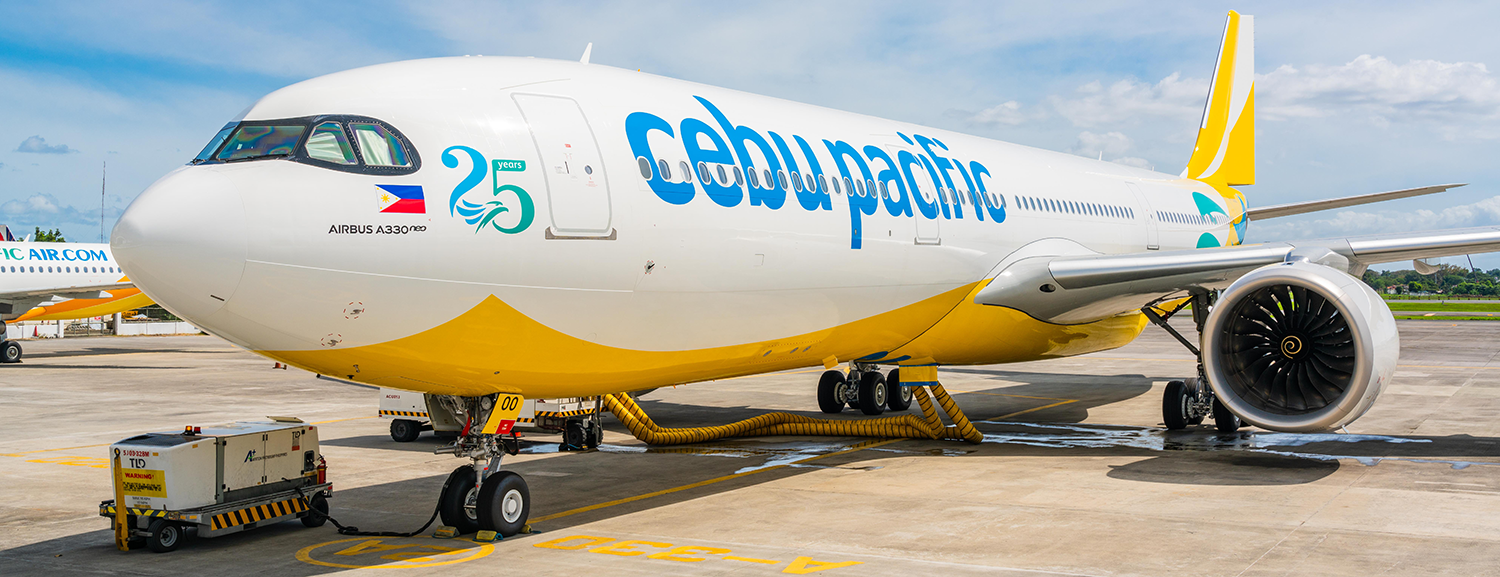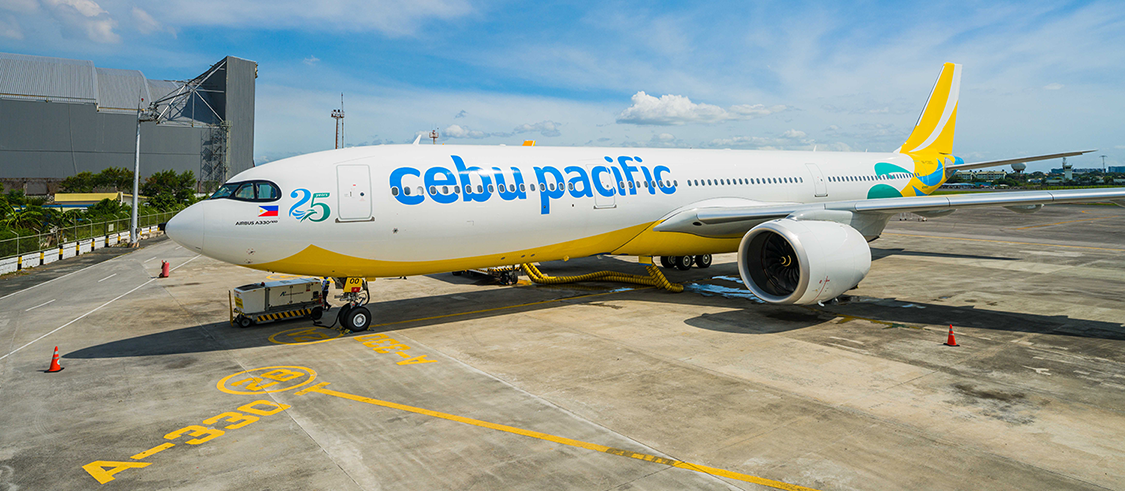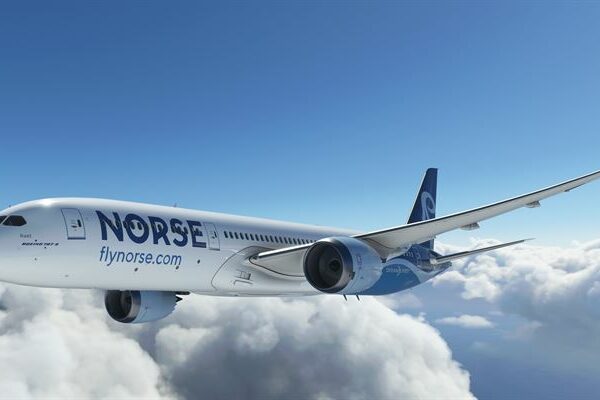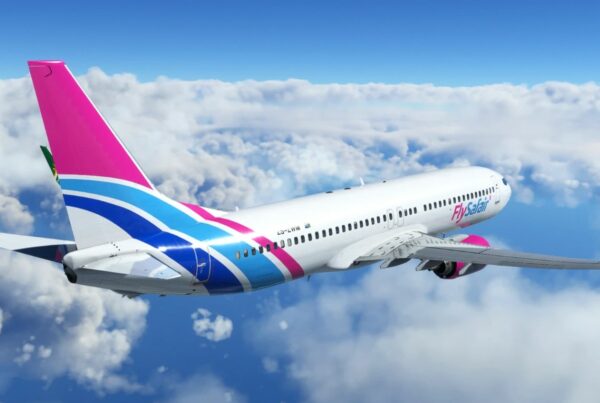As the Philippine domestic travel market booms and international travel returns, low-fare carrier Cebu Pacific is out to prove it can come back stronger than before.
LARA Editor Lucy Powell investigates.
Cebu Pacific has the undisputed honour of being the longest-serving low-fare airline in the Asia-Pacific region and for good reason.
The carrier, formed in 1996 and later remodelled into a low-fare format circa 2005, is based in the Philippines – a thriving archipelago whose very geography ensures it relies heavily upon air travel to keep its people connected.
What’s more, the Philippine labour diaspora (termed since the 1980s as bagong bayani or “modern-day heroes”) is one of the largest in the world, with estimates from 2021 putting its overseas workers at 9 to 10 million, around 10% of the country’s 100 million population.
It is this backdrop – the beautiful cluster of islands surrounded by azure seas with an ever-moving populace – that creates the perfectly advantageous location for a low-fare carrier like Cebu Pacific to thrive.
Mike Szucs, Chief Executive Officer of Cebu Pacific, says: “The low-fare model is absolutely the one to do in short-haul travel. So we’re just out to do it better than we did before [pre-Covid].”
At present, the low-fare carrier is steadily climbing back towards a 55% to 45% domestic-to-international split in terms of passenger carrying capacity (the carrier sat at around a 70% to 30% split of seats between markets during Covid). Yet, despite this shift, Cebu Pacific still relies heavily on its domestic market.
By the end of Q3, the low-fare carrier is expecting to control 60% of the domestic market share – by no means a monopoly, but still a sizeable chunk of the Filipino airline scene.
While short-haul routes prove the most profitable – there are four billion people within three hours’ flying distance of its hub in Manila, perfect for short routes – CEO Szucs is still keen to point out the airlines’ long-haul capabilities that primarily serve its so-called “modern-day heroes”.
“Long-haul LFCs are not a slam dunk,” he says. “We’re pragmatic about where we go, and the routes we’re on have very specific characteristics. For example, Manila to Dubai is an incredibly competitive route, but it’s such a big route that there’s room for everyone.”
Currently, Cebu Pacific covers 35 domestic destinations and 23 international ones, which include three long-haul routes to Dubai, Melbourne and Sydney.
Its hub airports in Manila, Cebu and Clark serve as an ideal connecting area for passengers looking to complete an onward journey through Southeast Asia. But if there are plans for route expansion any time soon, Szucs downplays their immediacy.
“We’d always look to add capacity to and up gauge our pre-existing routes,” he says, citing Dubai, Japan, and Bangkok as examples of where the airline has either increased its flight frequency or is looking at doing so.
“There will be some new routes, and I wouldn’t rule out the odd long-haul route in addition to what we’re doing now. But if I was to project down the line in five to six years’ time, you won’t see too many more long-haul routes.
“Will we have opened up short-haul and more domestic routes [in the future]? Yes. But only when we’ve added density onto the routes that we’ve already got. That’s a big part of our strategy.”



Image source: Cebu Pacific
Low-fare airline: A matter of complexity
As for the airline’s fleet, Cebu Pacific enjoys a diverse make-up of its 76 aircraft (57 Airbus and 19 ATRs); A320/A321ceos, A330ceo and neo aircraft join A320neos, A321neos, ATR 72-600s and ATR 72-500s. Collectively, they sport an average fleet age of 6.1 years.
Whilst sceptics might criticise the low-fare carrier’s lack of simplicity when it comes to fleet, Szucs has a deft counter-argument.
“We understand that there is a value to complexity,” he says, pointing out the mixture of infrastructure and runways that scatter the Philippines.
“There are some very attractive places to go, but the runways aren’t long or strong enough [to take an A321neo or an A330]. So if we were to just have A321neos, there’d be places that we couldn’t go to with these jets.
“Of course, the infrastructure in the Philippines is improving, and there’s really encouraging signs from the current administration. So maybe in future some of those short airfields will be lengthened and they will eventually take a jet.”
The A330s – an unusual aircraft type for a low-fare carrier to have, given the sheer number of seats needing to be filled – also solve another issue facing the Philippines carrier, that of slot constraints.
“The A330 is a very effective aircraft to attack the slot issues,” says Szucs. “As a low-fare carrier, we naturally look to optimise every single slot that we have.
“One of our strategies has always been to up gauge our aircraft where we can make sure we’ve got the right seat density.
“Normally when you put a widebody into a short-haul network it does get challenged because of the cost on an airline, particularly maintenance costs.
“But now we’ve got a fantastically cost-effective outcome on these A330neos.”
The carrier also has the demand. Its A330neos have the highest seat-density in the skies, fitting its 459 seats in a single-class 3-3-3 configuration which Szucs says they’re consistently managing to fill.
Cebu Pacific ordered 16 of the type at the Paris Air Show in 2019 and expects eight to be delivered by the end of this year, ramping up to 11 by 2024.
As for the airline’s fleet expansion elsewhere, in July it took delivery of its eighth aircraft this year, an A320neo, from Nanjing, China, which was flown on a 41% blend of SAF. Fifteen aircraft are scheduled for delivery this year: 10 Airbus neos (including A330s, A320s, and A321s), and five aircraft on lease.
The carrier is also looking to boost its ATR numbers to serve those domestic routes with smaller runways that cannot support larger aircraft, increasing this part of its fleet from 14 to 16 with additional orders next year.



Image source: Cebu Pacific
Cebu Pacific: Facing the headwinds
On the subject of challenges, the main focus for Cebu Pacific is now all about trying to grow sustainably.
While it is on track to restore 100% pre-pandemic capacity levels by the end of the quarter, and has turned a profit in Q1 2023 for the first time since Covid hit, the path ahead sees the carrier facing challenging headwinds.
Cebu Pacific has a commitment to convert to an all-neo fleet by 2028, but supply chain constraints, issues with the Pratt & Whitney GTF engine and manufacturer backlogs are currently making it difficult to get availability.
In fact, at the time of writing, nine of the airline’s 76-strong fleet have been grounded, including three neos long-term grounded, due to various incidents that include the ongoing GTF engine issues and freak weather circumstances.
“We haven’t yet faced any challenge in terms of manpower, because we brought back staff very early [during Covid], but one of the major challenges we’re facing is all to do with aircraft,” confirms Szucs.
“It’s an operational headache when you’re flying largely domestic with 90% load factors [and these incidents happen]. But many airlines around the world are facing the same issue [with the GTF]. It’s a fantastic engine on-wing, we just need it to require off-wing overhaul much less frequently.
The airline current has an firmed order for A320-family aircraft, a mix of A320neos and A321neos.
Five additional deliveries of A320s, two of which are A320ceos, have also happened this year. This has been in a bid to boost the carrier’s growth objectives and improve fleet availability to make up for the delivery delays and unscheduled A320neo maintenance.
Cebu Pacific will also add further additional leased aircraft, a mix of A320neos and A320ceos, during 2023 and 2024 – the latter, on short-term leases.
“We’re now out there trying to bring in additional lift with these A320ceos, and I think that’s a very sensible move,” he confirms.
So why, despite these setbacks, is the carrier in a good place to grow? Southeast Asia traffic is recovering well, and as mentioned, it all comes down to location and dwindling competition from other carriers, like AirAsia Philippines, in the region.
“We’re operating with more slots now. It’s more than we had pre-COVID,” says Szucs.
Where other airlines are focusing on Manila, the capital of the Philippines, Cebu Pacific capitalises on opportunities outside – notably in Cebu, where it enjoys around a 70% market share.
“It’s the areas outside Manila that we see an opportunity domestically for us to move on,” says Szucs.
“If we weren’t already operating as a low-fare carrier here, we’d still come to the Philippines and say let’s start up an operation here because it’s just such a fantastic opportunity.”
Interestingly, when it comes to how the carrier is dealing with the backlogs, China’s Tianjin’s Final Assembly Line is purportedly much faster with its delivery times – a benefit that the CEO is naturally not complaining about.
“Whether it [the Airbus aircraft] comes from China or Toulouse, if an Airbus arrives on time that’s really all that matters,” says Szucs, noting the fuel savings on the delivery flight from China to Manila as an added bonus.
Sustainable aviation: One small step
As for the carrier’s sustainability measures, while SAF is still incredibly expensive and scarce as a resource, this isn’t deterring Cebu Pacific from doing what it can to improve its carbon footprint.
In November 2022, Cebu Pacific won the CAPA (Central Asia Pacific Aviation) Award for sustainability for its efforts in the regional aviation industry.
With its aforementioned aspirational 2028 all-neo date, its sustainability journey has been heavily linked to fleet renewal and swapping out older models for more efficient aircraft.
To complement this, Cebu Pacific has also made an effort to fly its delivery aircraft using SAF blends – as shown by its most recent A320neo delivery from China in July.
However, besides this, Szucs notes the other “low-hanging fruit” that make up the metaphorical sustainability “tree”. Notably, the carrier is looking to transform and improve its ground equipment over the next 12 to 18 months, starting in Manila.
“It’s at considerable cost, but there’s a really good business case,” he says.
The airline is relying on solar power to power what will soon be an all-electric fleet of push-back carts, belt loaders and buses.
Szucs says: “Whilst it’s a small part of our footprint, we shouldn’t forget to do it. I think it instils a momentum in terms of what we’re about [as an airline]. Frankly, whilst I think everyone must do an awful lot more, I think the important thing is that we’re in it and we’re driving forwards.”








